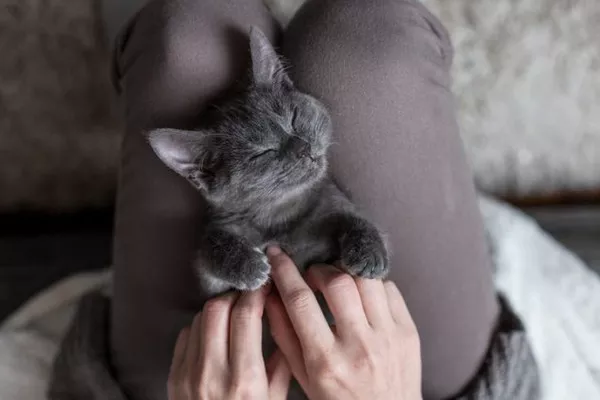When it comes to feline companionship, the British Shorthair breed stands out for its unique blend of charm, elegance, and independent nature. While many associate lap cats with breeds like the Ragdoll or the Persian, the question remains: is the British Shorthair also inclined to curl up on your lap?
1. Understanding the British Shorthair Temperament
The British Shorthair is often described as dignified, reserved, and observant. Known for their calm demeanor and independent nature, they are not typically considered lap cats in the traditional sense. However, this doesn’t mean they lack affection or don’t enjoy human company.
2. Bonding with British Shorthairs
British Shorthairs may not be overly clingy, but they do form strong bonds with their human companions. They appreciate a more hands-off approach to affection, preferring to be near you rather than constantly on your lap. They enjoy lounging in close proximity, keeping an eye on their surroundings while still relishing your presence.
3. The Gentle Touch
While British Shorthairs may not demand constant physical attention, they do appreciate gentle touches and occasional petting sessions. They have a soft spot for chin scratches and head rubs, which can deepen the bond between cat and owner. It’s important to gauge their comfort level and respect their boundaries when seeking physical contact.
4. Selective Lap Moments
Although British Shorthairs aren’t renowned for being lap cats, they do have their moments of lap-seeking behavior. These instances are often initiated by the cat itself, indicating that they are in the mood for closeness. Embrace these opportunities, as they are precious moments where your British Shorthair chooses to share their warmth and affection with you.
5. Creating a Cat-Friendly Environment
To encourage your British Shorthair’s affectionate side, it’s essential to provide a comfortable and enriching environment. Ensure they have cozy spots for lounging, such as soft blankets or cat beds placed near you. Interactive toys, scratching posts, and window perches can also stimulate their curiosity and make them feel more at ease in their surroundings.
6. Respectful Boundaries
Respecting the British Shorthair’s independent nature is crucial for fostering a healthy relationship. Avoid forcing physical contact or overwhelming them with excessive attention. Instead, allow them to approach you on their own terms, and be attentive to their body language and signals of comfort or discomfort.
7. Other Factors to Consider
It’s important to note that individual personalities can vary within the British Shorthair breed. Some may exhibit more lap-seeking behavior than others. Additionally, factors such as age, upbringing, and past experiences can influence a cat’s inclination towards lap-sitting. It’s always best to understand and appreciate your specific British Shorthair’s unique personality traits.
Conclusion
While the British Shorthair may not fit the classic definition of a lap cat, this doesn’t diminish the love and companionship they bring to their owners. Their calm and independent nature, combined with occasional displays of affection, make them cherished feline companions. By understanding and respecting their preferences, creating a welcoming environment, and embracing their selective lap moments, you can build a strong bond with your British Shorthair that goes beyond simply sitting on your lap.
Related Topics:

























